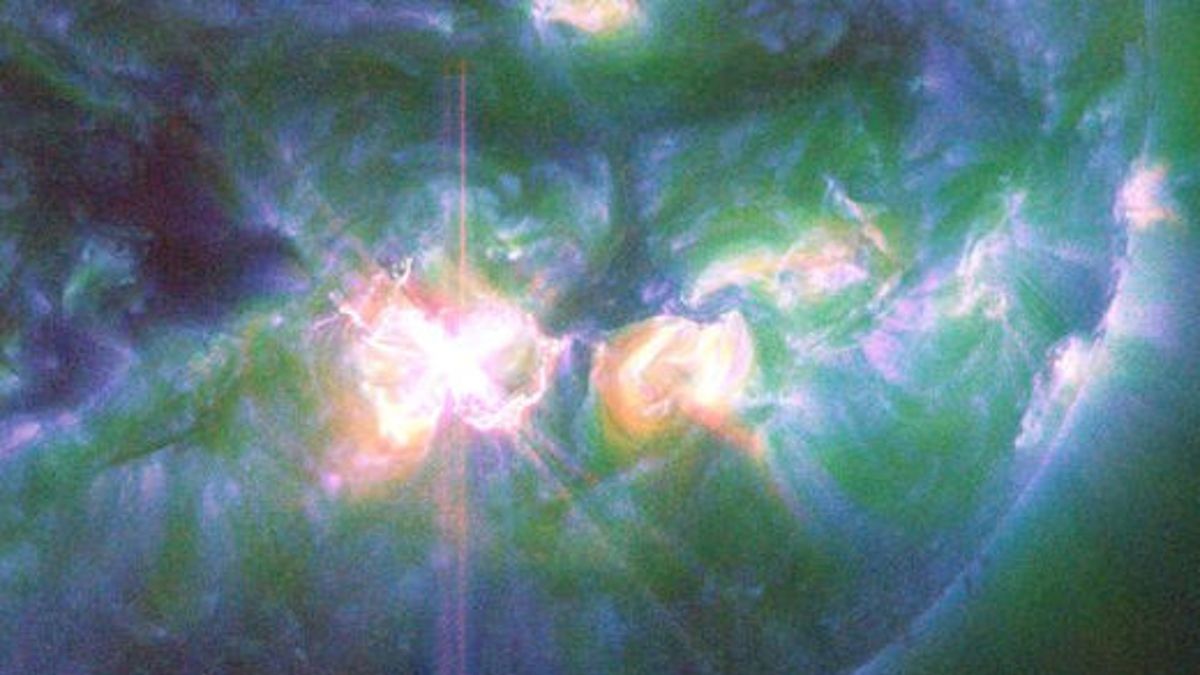The sun has unleashed its most powerful solar flare in 7 years, following another supercharged explosion earlier in the week. Both outbursts have launched coronal mass ejections (CMEs) at Earth, which could trigger vibrant aurora displays across large parts of our planet this weekend.
The latest X-class solar flare — the most powerful type the sun can produce — exploded from sunspot AR3842 at around 8 a.m. EDT on Thursday (Oct. 3). The flare had a magnitude of at least X9, making it the most powerful solar eruption of the current solar cycle — surpassing a monster X8.7 magnitude blast in May.
It is the most powerful solar flare since September 2017, when the sun emitted an X11.8 and X13.3 flare within a few days of each other.
The latest flare launched a wave of radiation at Earth, bypassing Earth’s magnetic shield, or magnetosphere, and ionized the upper parts of the upper atmosphere, creating a temporary radio blackout above parts of Africa and the South Atlantic Ocean. It also hurled a CME — a cloud of fast-moving plasma and solar particles — into space, which will likely collide with Earth on Sunday (Oct. 6), according to Spaceweather.com.
On Monday (Oct. 1), the same sunspot unleashed a massive X7.1 flare, which is now the third most powerful of the current cycle. This caused a similar radio blackout above the Pacific Ocean and launched another CME at Earth. The plasma cloud was predicted to hit Earth on Saturday (Oct.5) but could now strike our planet tonight (Oct. 4).
Related: Could a powerful solar storm wipe out the internet?
When the CMEs hit our planet over the weekend, they will likely trigger a disturbance in the magnetosphere, known as a geomagnetic storm, which enables solar particles to penetrate deep into the atmosphere and trigger vibrant aurora displays at unusually low latitudes. The National Space Weather Prediction Center predicts that a geomagnetic storm could persist between Oct. 4 and Oct. 6 and will likely reach a “strong” (G3) power level, making auroras likely.
A similar geomagnetic storm occurred in mid-August after another X-class flare hurled a CME right at us.
The latest solar outbursts are a reminder that we have likely entered the explosive peak of the sun’s roughly 11-year solar cycle, known as solar maximum. Scientists had initially predicted that this phase would begin next year and be less active than past solar cycles. However, it quickly became clear that solar maximum would arrive sooner and be more active than expected, forcing researchers to update their forecasts for the first time in their history.
2024 has already been rife with solar activity. In May, our planet experienced its most powerful geomagnetic storm for 21 years after a barrage of X-class CMEs triggered some of the most widespread auroras for 500 years. And in August, the number of visible sunspots hit a 23-year high.
The latest monster flare is the 42nd X-class flare of 2024, according to SpaceWeatherLive.com. For context, there were only 36 X-class flares over the previous nine years.
Over the next few months, the number of geomagnetic storms and auroras could spike further as Earth’s magnetic field becomes more closely aligned with the solar wind around the fall equinox. This means any solar storms spat out by the sun have a higher chance of slamming into the magnetosphere.
Sunspot AR3842 could also emit more powerful solar flares in the coming days, researchers warn.


